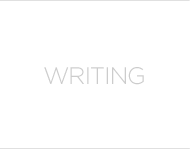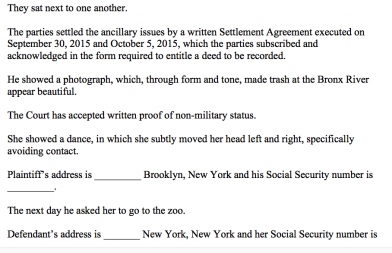Welcome to the first installment of an online project related to And, the performance I’m making to premiere at Abrons Arts Center March 30-April 2, 2017 (Thursday-Saturday at 8, Sunday at 3). And uses experimental literary devices to create a series of live, three-dimensional essays. I’m playing with the lines between fact and fiction, narrative and abstraction, legibility and complexity, working with–and against–the roles of formal structures in writing, moving, and making a life.
In this website part of the project, my rehearsal, video, image, and writing experiments in progress alternate with excerpts from other people’s writing. I’m interested in the ways all of this language (quoted, projected, animated, written and/or physical) can converse, offer ideas – sometimes contradictory, and create associations rather than pin down any one meaning. I’ll post a new page like this about once a month.
—
Some words: Wildness, marriage, structure, body, language, power, sex, art, dance, teaching, performance, contradiction, form, divorce, friendship, love, hate, actually knowing someone, work, play, imagination, honesty, creating, experience, meaning, application, energy, submission, meditation, feminism, Hillary Clinton, poetry, solitude, university, uncertainty, community, hierarchy, denial, scholar, artist, lists, numbers, ecstasy, not-knowing, text, imagination, children, student, class, religion, falling apart, practice, erotic, connection, personal essay, Spalding Gray, female, male, aging, ambiguity, lecture, conversation, contract, syllabus, stability, mobility, coherence, lyric essay, known, dominance, questions, answers, association, House, home, non-monogamy, family, autobiography, fear, theory, reality, beginning, ending, property, dailiness, life, generosity, categories, organization, real life, and, or, commitment, depth.
“This work is all very disobedient, in a way it picks up where Disobedience left off; but it doesn’t lecture as much or shake its fist so, is less interested in the so called real than in denying its existence in favor of the real real.” Alice Notley from “The Poetics of Disobedience”
“Filling in the blanks replaces the truth that we don’t entirely know with the false sense that we do. We know less when we erroneously think we know than when we recognize that we don’t. Sometimes I think these pretenses at authoritative knowledge are failures of language: the language of bold assertion is simpler, less taxing, than the language of nuance and ambiguity and speculation.” Rebecca Solnit from “Woolf’s Darkness: Embracing the Inexplicable”
“The text is a performance on a page. Text is more than a description. Text also summons a sensory experience. You know what I mean? Words have a sound and shape. Words against other words create texture. Words ring in your head. They command images and emotions. So in reading and writing, we experience the text in ways that are physical as well as abstract…. And writing is a continuous improvisation.” Shawn Wen interview in We Might As Well Call It the Lyric Essay
“Somewhat typically for [Barbara] Guest (as for [John] Ashbery), the lines begin with a first-person speaker addressing the reader, but with each line that follows, that speaker leads us further and further away from the self that began, so that by the time the sentence draws to a close, we are out in the jungle with no hand to hold. For Guest this dissolution is desirable, if sometimes melancholic; at times it is the deliverer of ecstasy.” Maggie Nelson from Women, The New York School, and Other True Abstractions.
“Can form make the primary chaos (the raw material, the unorganized impulse and information, the uncertainty, incompleteness, vastness) articulate without depriving it of its capacious vitality, its generative power? Can form go even further than that and actually generate that potency, opening uncertainty to curiosity, incompleteness to speculation, and turning vastness into plenitude? In my opinion, the answer is yes; that is, in fact, the function of form in art. Form is not a fixture but an activity.” Lyn Hejinian from “The Rejection of Closure”




